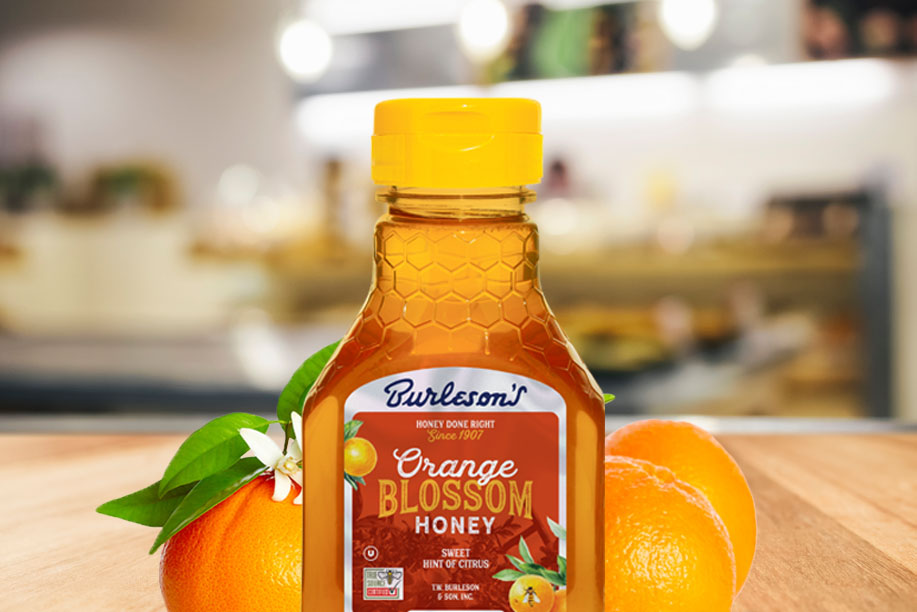A common question we get from customers is “What is orange blossom honey?” They’ve heard that it has unique notes of citrus, and they’re wondering how that happens. Is it natural? Or have we added something to the honey to give it this distinctive flavor?
The answer is that the flavor is totally natural. Like with all honey varietals, orange blossom honey takes its flavor from the nectar that the bees used to make the honey. The dominant plants in the area around the hive will determine the type of nectar available to the bees.
Bees make orange blossom honey as they are pollinating the citrus groves of North America. The nectar the bees collect from these citrus trees gives orange blossom honey its delicate and sweet flavor. This nectar has a special fragrance that brings the refreshing aroma of a ripe orange grove right into your kitchen. This unique taste experience makes Burleson’s Orange Blossom Honey a customer favorite.
Of course, orange blossom honey is just one of the more than 347 different floral varieties of honey. Here are a few of the other most widely available varieties and their floral sources:
Alfalfa Honey
You’ll find the floral source of alfalfa honey throughout the midwestern United States. Canada is also a large producer of alfalfa honey. Alfalfa honey is traditionally white or extra light amber in color with a very mild flavor. This honey serves primarily as a table-grade, consumer product.
Basswood Honey
Found in Southern Canada through Alabama and Texas, basswood honey typically has a bitter taste. It is often mixed with clover honey and found in many industrial or ingredient blends.
Buckwheat Honey
Buckwheat honey comes primarily from the northern United States in climates, particularly from areas are relatively cool and moist such as Minnesota, New York, and Ohio. It is known for its dark brown color and very distinctive flavor. Industrial and bulk customers often use Buckwheat Honey as a “fill” honey.
Clover Honey
Clover honey is found throughout the United States and in many Southern Hemisphere regions. This honey is predominately white and has one of the more mellow flavor taste profiles. It is normally found in color ranges from water white to extra light amber. Its mild, delicate flavor makes it a favorite of home consumers.
Sage Honey
Relatively temperamental due to moisture constraints, sage honey is generally white to water white. It is extremely mild in flavor and reminds many people of the taste of “cotton candy.”
Tupelo Honey
You’ll find tupelo honey primarily in the southeastern United States. It has a mild and pleasant flavor and will not granulate. Its light color makes it a popular consumer-grade honey.
Tallow (Chinese) Honey
Found primarily along the Gulf Coast, Chinese tallow is a very distinctive, dark honey. It’s too pungent for most consumers, but when manufacturers blend it with other ingredients it establishes a sweet honey flavor. That’s why food processors often use it as an industrial or bulk ingredient honey.

